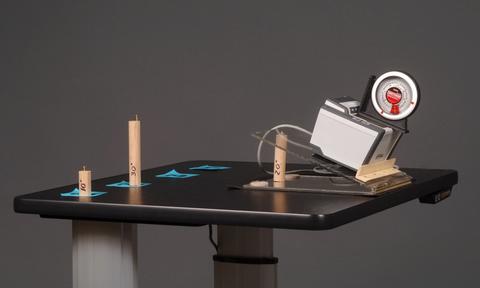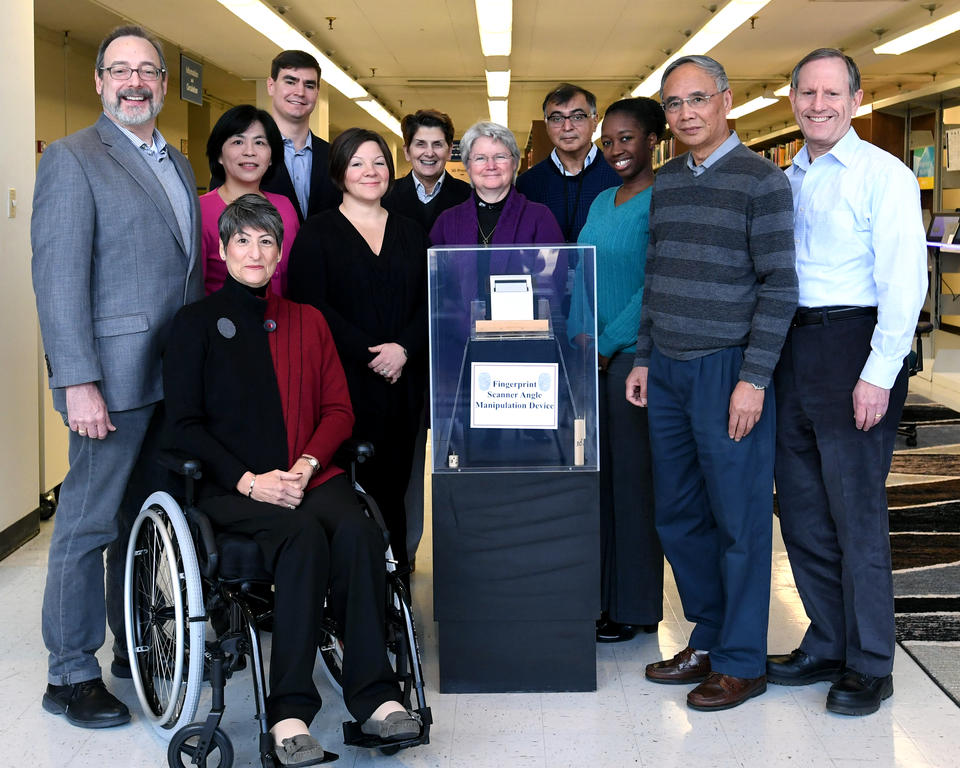Fingerprint Scanner Angle Manipulation Device

The Fingerprint Scanner Angle Device
The NIST Library recently added a new exhibit, courtesy of the Information Technology Laboratory's Biometrics Usability team. The Fingerprint Scanner Angle Manipulation Device was designed in 2008 to test the usability of the U.S. Department of Homeland Security's (DHS) fingerprint scanners when placed at various angles.
At that time, DHS's United States Visitor and Immigration Status Indicator Technology (US-VISIT) program was preparing to change its U.S. port of entry identity technology from a two-fingerprint capture process to a ten-fingerprint capture process. However, there was concern that the existing countertops that housed the fingerprint scanners were too tall to support the ten-fingerprint collection process. Lowering the countertops at US-VISIT facilities was not possible, but the fingerprint scanners could be angled on the counters.
DHS asked the NIST Biometrics Usability team, part of the Information Technology Laboratory, to examine the impact on fingerprint capture performance when angling the fingerprint scanners at the existing counter heights. The team set out to determine the best angle to position the fingerprint scanner for efficiency in the time required to complete the task, the effectiveness in obtaining usable prints, and how comfortable it was for the user.
The team's analysis showed that an angle of 20 degrees was the best overall angle to position the fingerprint scanner. DHS adopted NIST's guidance and placed all fingerprint scanners at 20-degree angles at each point of entry to the United States as well as consulates and embassies. The angling of the scanners impacts 350,000 visitors entering the United States daily and results in a better experience.


